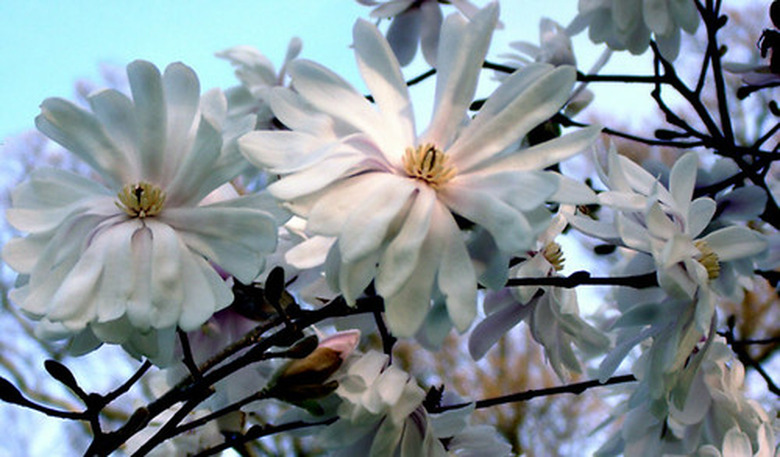Magnolia Tree Pests
The stately presence of a shady magnolia tree can be undermined by the pests that will attack the tree if left untreated. Fortunately, gardeners have a small list of pests with which to contend when growing a magnolia tree. If you know what to look for–the signs and symptoms–you'll be able to identify the specific infestation and take steps to rid the tree of the problem.
Types
The magnolia scale is the most common and destructive pest that affects magnolia trees. Leaf miners and the magnolia borer are two insects that can also harm magnolia.
Evidence
Magnolia scale, which attacks the tree by feeding on the sap, weakens the growth of foliage and twigs. It leaves a sticky material called honeydew, which drips onto leaves and branches. Black sooty mold, a fungal disease, then develops on the leaves. Leaf miners eat through the leaves and flowers of the magnolia tree. As its name implies, the magnolia borer feeds from within the tree and often shows its presence through the girdling of the magnolia's trunk.
- The stately presence of a shady magnolia tree can be undermined by the pests that will attack the tree if left untreated.
Treatment
Horticultural oil or insecticidal spray will effectively rid the tree of magnolia scale. Horticultural oil is applied in late August to treat the youngest form of the pest, the crawlers. Subsequent applications of the oil are applied in October to treat overwintering scales and then again in March. Insecticides can also be used to kill leaf miners and the magnolia borers.
Identification
The adult magnolia scale is nearly 1/2 inch in diameter with smooth, tan-brown scales and no visible legs or antennae. The leaf miner is a small, black weevil that reaches about 3/16 inch long. Its antennae, mouth parts and tarsi are brown. An adult borer has a metallic color and ranges in length from 1/3 to 1 inch.
- Horticultural oil or insecticidal spray will effectively rid the tree of magnolia scale.
- An adult borer has a metallic color and ranges in length from 1/3 to 1 inch.
Prevention/Solution
Magnolia trees need closely inspected–the branches in particular–before purchase because the exoskeleton from the magnolia scale can be present from the previous growing season. Young magnolia trees grown in a nursery may also show evidence of the magnolia borer, particularly the trunk area.
